François-André Vincent
François-André Vincent | |
|---|---|
 Portrait of François-André Vincent by Adélaïde Labille-Guiard, painted 1783 | |
| Born | 30 December 1746 |
| Died | 4 August 1816 (aged 69) |
| Nationality | French |
| Occupation | Neoclassical painter |
| Spouse(s) | |
François-André Vincent (French pronunciation: [fʁɑ̃swa ɑ̃dʁe vɛ̃sɑ̃]; 30 December 1746 – 4 August 1816) was a French neoclassical painter.[1]
Biography[]

He was the son of the miniaturist François-Elie Vincent and studied under Joseph-Marie Vien. François-André Vincent was a pupil of École Royale des Éleves Protégés. From 1771 to 1775 he studied at the French Academy in Rome. He travelled to Rome after winning the Prix de Rome with Germanicus Calms Sedition in his Camp in 1768, and was when he was installed at the Palais Mancini, where he painted numerous portraits, inspired by Jean-Honoré Fragonard's style, who also was visiting Rome and Naples in the same time.
In 1790, Vincent was appointed master of drawings to Louis XVI of France, and in 1792 he became a professor at the Académie royale de peinture et de sculpture in Paris. In 1800, he married the painter Adélaïde Labille-Guiard who was well known for her mastery in portrait painting, a member of the Royal Academy and painter for the Royal Family.
He was a leader of the neoclassical and historical movement in French art, along with his rival Jacques-Louis David, another pupil of Vien. He was influenced by the art of classical antiquity, by the masters of the Italian High Renaissance, especially Raphael.[2][3] François-André Vincent was one of the principal innovators of the subjects and themes in French art of Neoclassical style and his works were of a high standard.[4] He was one of the founder members of the Académie des beaux-arts – part of the Institut de France and the successor to the Académie royale – in 1795. Towards the end of his life he painted less due to ill health, but he continued to receive official honours.
Works[]

Georges Cuvier


Alcibades being taught by Socrates, by François-André Vincent

Zeuxis Choosing his Models for the Image of Helen from among the Girls of Croton, detail
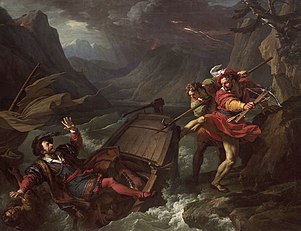
William Tell's leap (Tellensprung) from the boat of his captors at the Axen cliffs
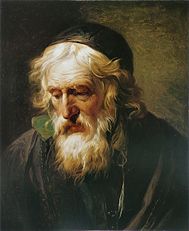
Greek priest
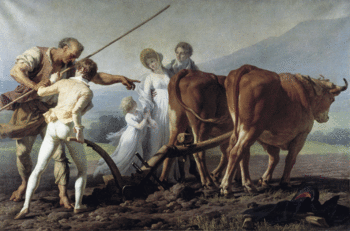
The Ploughing Lesson

Portrait of a man.
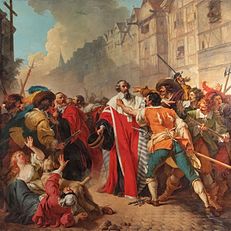
Molé et les factieux, Mathieu Molé (1584-1656), French statesman, and rebels
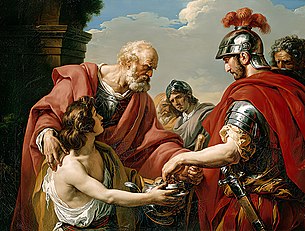
Belisarius by François-André Vincent, painted 1776

Portrait of Pierre Roussea
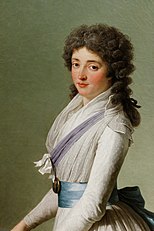
Portrait de la baronne de Chalvet-Souville, née Marie de Broutin (detail)
See also[]
- Adélaïde Labille-Guiard
- Portrait of Baron Georges Cuvier (1769–1832), Whitfield Fine Art
References[]
- ^ "The Painter François-André Vincent". .edu. Retrieved 13 March 2015.
- ^ "VINCENT, François-André". www.wga.hu. Retrieved 13 March 2015.
- ^ "Francois-Andre_Vincent_1746-1816". museefabre.montpellier-agglo.com.
- ^ "VINCENT, François-André". www.wga.hu. Retrieved 13 March 2015.
Further reading[]
- Book about François-André Vincent's life: The Perfect Foil: FranCois-Andre Vincent and the Revolution in French Painting by Elizabeth C. Mansfield
- More works
External links[]
| Wikimedia Commons has media related to François-André Vincent. |
- French neoclassical painters
- Prix de Rome for painting
- Burials at Père Lachaise Cemetery
- 1746 births
- 1816 deaths
- Members of the Académie des beaux-arts
- 18th-century French painters
- French male painters
- 19th-century French painters











